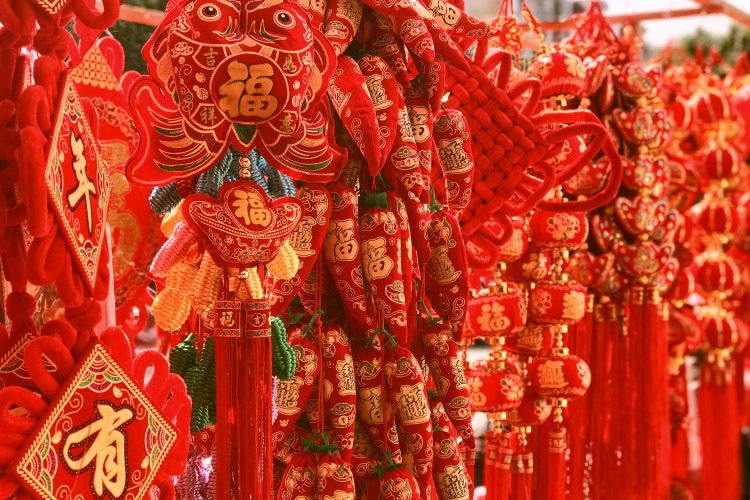The Tradition of Chinese Kites: A Cultural Legacy in the Sky
The weather this past weekend was definitely too windy for kite flying; however, traditionally, spring is seen as the ideal time for this popular hobby.
Kites have long been a significant part of Chinese culture and are a tradition that dates back over 2,000 years. Originally created during the Warring States period (475–221 BC), kites were initially used for military purposes, such as measuring distances, testing the wind, and even sending signals. As time passed, however, the kite evolved into a symbol of good fortune, celebration, and artistic expression.
Today, Chinese kites are known not only for their beauty and craftsmanship but also for their rich history and cultural significance. The tradition of kite-making has developed over centuries, with distinct regional styles emerging, each contributing to the vibrant diversity of this ancient art form.

The Four Major Schools of Chinese Kite-Making
Among the many varieties of Chinese kites, four styles stand out as the most influential and enduring: Ha, Jin, Ma, and Cao kites. Each of these styles represents a unique approach to design, technique, and artistic expression.
Ha Kites
The Ha-style kite, named after its creator, the famous kite master Ha Guoliang, originated in northern China, specifically in Hebei province. This style is known for its simplicity, elegance, and the use of light materials. Ha kites are typically designed with a minimalistic approach, using traditional shapes like birds, insects, and geometric patterns. The kites are often made with bamboo frames and decorated with colorful paper or fabric.
What sets the Ha-style of kites apart is its focus on aerodynamic efficiency, allowing the kites to fly with grace and stability even in moderate winds. The craftsmanship is precise, and the kite-making process involves intricate knotting and careful attention to detail. Ha-style kites are also appreciated for their delicate balance between art and function.

Jin Kites
Jin kites are named after the renowned kite master Jin Fuzhong, who was a craftsman in the Forbidden City during the Qing dynasty. The residence of the last emperor, Pu Yi, still preserves three kites made by Jin. His style is particularly notable for its bold, dramatic designs and use of vibrant colors.
Unlike Ha kites, which favor simplicity, Jin kites embrace complexity, often incorporating detailed depictions of animals, mythical creatures, and legendary figures. Jin kites are known for their larger-than-life proportions and impressive flying abilities. These kites are built with sturdy frames and heavy-duty materials such as silk and strong bamboo, allowing them to withstand strong winds. These kites are especially popular in kite festivals, where their grand size and intricate details leave a lasting impression.

Ma Kites
These kites were created by the kite master Ma Jin, whose father was a steward managing the horses at the palace of a prince. Edified by the environment, Ma had been fond of observing and painting horses since he was a child. This was how he started his career as a painter and developed an exclusive style in fine-brush painting of flowers and birds, which was the basis of his kites.
The Ma-style kite-making technique emphasizes the use of fine, detailed painting and embroidery, often creating kites that resemble miniature works of art. Unlike other styles, Ma-style kites prioritize decoration, and are often considered "an excellent decoration indoors rather than a kite in the sky." The Ma kite is renowned for its integration of Chinese painting techniques with kite-making, making these kites a fusion of both visual and cultural beauty.

Cao Kites
Cao kites are a unique and culturally rich tradition in Chinese kite-making, named after the renowned Chinese writer Cao Xueqin, the author of the famous novel Dream of the Red Chamber. The kites' themes are vast and varied, reflecting rich elements of Chinese culture and folklore. Known for their artistic beauty, scientific principles, entertainment value, and health benefits, the kites are not only captivating objects to admire but also collectible works of art.
This craft has a long history, with exquisite manufacturing techniques and a profound representation of traditional culture. The kites' features exhibit the distinct cultural traits of Beijing, combining northern and southern crafting methods. Cao kites' wide range of subjects and their ability to capture the spirit of traditional Chinese aesthetics and craftsmanship make them a valuable part of Chinese heritage.

These different styles of kites not only celebrate the beauty of Chinese craftsmanship but also embody the deep connection between Chinese people and the natural world, offering a glimpse into the nation's history, mythology, and artistic spirit. As kite festivals continue to be held across China and around the world, the tradition of Chinese kite-making lives on, capturing the imagination of all who gaze upon them soaring high in the sky.
READ: Celebrate National Poetry Month: Five Beijingers Share Their Favorite Poems
Images: Uni You, Canva, Unsplash







